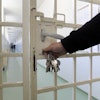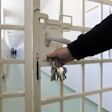
Dental practices increasingly rely on a vast array of technologies for managing patient records, billing, and communication. While these advancements bring countless benefits, they also expose dental practices to significant cybersecurity risks. Understanding these risks is the first step toward safeguarding sensitive patient information and ensuring the smooth, uninterrupted operation of your practice.
A data breach can result in severe consequences, including legal ramifications, financial loss, and reputational damage. Here are some of the most common threats and some actionable steps you can take to fortify your cybersecurity posture.
Phishing attacks
Phishing is a common threat faced by dental practices. Cybercriminals send deceptive emails that appear to come from legitimate sources. The goal is to trick recipients into disclosing sensitive information, such as login credentials or financial details. These emails may also contain malicious links or attachments that, when clicked, can install malware on the recipient's device.
How to protect against phishing attempts
- Educate your entire team (including the doctors) -- even those with minimal computer use -- about how to identify phishing emails. Ongoing simulated phishing attacks launched against your practice are an excellent way to keep everyone aware and alert.
- Implement email security tools to block suspicious emails.
- Encourage verification of unexpected or unusual email requests through a secondary communication channel ("Trust but verify").
Ransomware
Ransomware is malicious software that encrypts a victim's files, making them inaccessible. The threat actor (hacker) then demands a ransom in exchange for a decryption key to "unlock" and restore the files. Dental practices are particularly vulnerable due to the critical nature of patient records.
How to defend against ransomware
- Regularly back up all data and store backups in a secure, offline location.
- Implement a vulnerability management program to identify and patch both external and internal vulnerabilities in your network.
- Upgrade traditional antivirus to endpoint detection and response or managed detection and response solutions to better protect against cyber and ransomware attacks.
- Enable multifactor authentication (MFA) for all remote access into your network. This applies to internal staff and all third-party vendors.
Weak password practices
Weak passwords are a significant vulnerability, allowing cybercriminals unauthorized access to sensitive systems and data. Common issues include using simple passwords, reusing them across multiple accounts, failing to change default passwords, and writing passwords down in plain sight.
How to strengthen password security
- Implement strong password policies requiring complex passwords.
- Use MFA to add an extra layer of security.
- Regularly update passwords and avoid reusing them.
- Use a password manager to securely store and manage passwords.
Unencrypted data
Data encryption is crucial for protecting sensitive information, both at rest and in transit. Unencrypted data can be intercepted and accessed by unauthorized individuals, leading to data breaches and compliance issues.
How to ensure data are encrypted
- Encrypt all patient records and sensitive information.
- Use secure communication channels, such as encrypted email.
- Implement end-to-end encryption to transmit data.
Outdated software and systems
Using outdated software and systems exposes dental practices to known vulnerabilities that cybercriminals easily exploit. Regular updates and patches to your systems are essential to maintaining the security of your practice's infrastructure.
How to keep systems updated
- Regularly update all software and operating systems.
- Automate updates, where possible, to ensure timely patching.
- Retire unsupported software and hardware.
Minimizing risk is essential
Cybersecurity is a critical concern for dental practices due to the sensitive nature and volume of patient data they possess and the increasing reliance on digital technologies. By understanding and addressing the most common cybersecurity threats -- phishing, ransomware, weak passwords, unencrypted data, and outdated systems -- dental practices can take proactive steps now to protect their systems and data. Implementing best practices such as staff education and training, robust security measures, regular backups, and timely patching of vulnerabilities, help create a secure environment that safeguards both patient data and the integrity of the practice.
Editor's note: Looking for more information on cybersecurity and wanting to earn a CE credit? Check out this free webinar on "Building Cyber Risk Resilience: Understanding the Clear & Present Danger."
Gary Salman is the CEO of Black Talon Security, a dedicated cybersecurity company with a strong focus in the dental industry. Salman is an expert in data security, particularly as it relates to the dental industry. As a speaker and writer, he lectures nationally on cybersecurity threats and their impact on dental practices.
The comments and observations expressed herein do not necessarily reflect the opinions of DrBicuspid.com, nor should they be construed as an endorsement or admonishment of any particular idea, vendor, or organization.



















